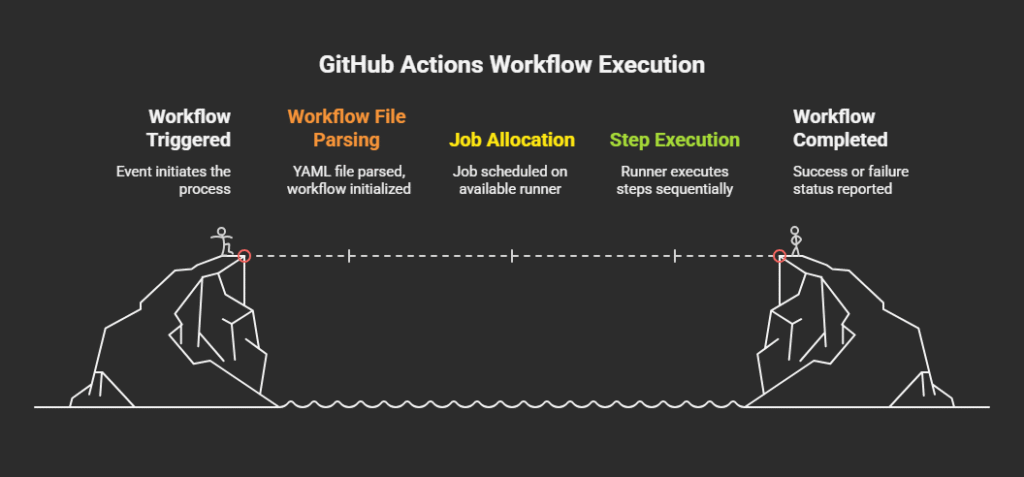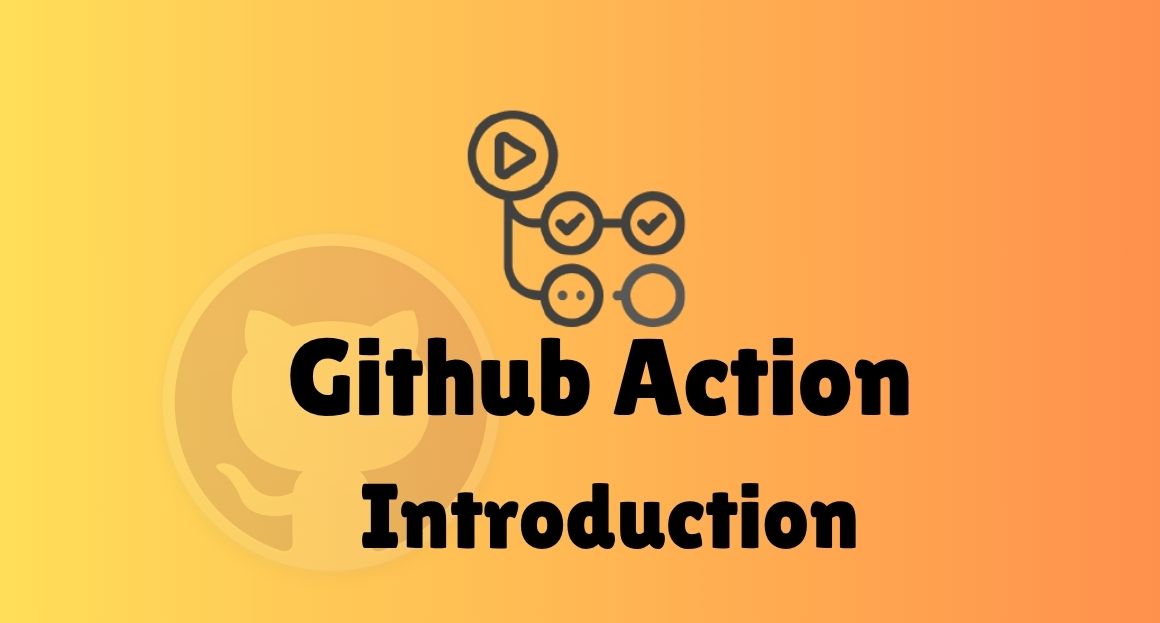Introduction
In the fast-paced world of software development, automating repetitive tasks can significantly boost productivity and consistency. GitHub Actions is a powerful feature within GitHub that enables developers to automate software workflows directly from their repositories. Whether you want to automate CI/CD pipelines, enforce code quality, or manage deployments, GitHub Actions offers a seamless, scalable, and integrated way.
This article explores what GitHub Actions is, how it works under the hood, and why it’s a game-changer for DevOps and modern software delivery.
What is GitHub Actions?
GitHub Actions is a CI/CD (Continuous Integration and Continuous Delivery) tool built directly into GitHub. It allows you to define custom workflows that are triggered by events in your GitHub repository—like pushing code, opening a pull request, or creating an issue.
It supports:
- Building, testing, and deploying applications
- Automation of routine tasks, such as labeling issues or triaging bugs
- Integration with third-party tools and services like Docker, AWS, Kubernetes, etc.
Key Benefits:
- Native to GitHub (no external setup needed)
- Supports container-based and virtual-machine-based runners
- Offers marketplace actions to integrate with thousands of tools
- Free usage for public repositories
Key Components of GitHub Actions
Understanding how GitHub Actions work starts with its fundamental components:
1. Workflows
A workflow is a configurable automation process made up of one or more jobs. It is defined in a .yml file located in the .github/workflows/ directory.
name: CI Workflow
on: [push]
jobs:
build:
runs-on: ubuntu-latest
steps:
- uses: actions/checkout@v4
- name: Run a one-line script
run: echo Hello, GitHub Actions!
2. Events
These are triggers that launch a workflow. Common events include:
pushpull_requestissue_commentschedule(cron jobs)workflow_dispatch(manual triggers)
3. Jobs
A job is a set of steps that run on the same runner. Jobs run in parallel by default, but you can configure dependencies using the needs: keyword.
jobs:
build:
runs-on: ubuntu-latest
steps:
- run: echo Building...
test:
needs: build
runs-on: ubuntu-latest
steps:
- run: echo Testing...4. Steps
Each job is made of steps, which are individual tasks such as checking out code, installing dependencies, or running commands.
steps:
- name: Install Dependencies
run: npm install5. Actions
Actions are reusable units of code. You can use pre-built actions from the GitHub Marketplace or write your own.
- uses: actions/setup-node@v4
with:
node-version: '18'How GitHub Actions Work: Step-by-Step Flow

Let’s break down a typical GitHub Actions workflow execution:
Step 1: Trigger
An event (e.g., code pushed to the repository) triggers the workflow.
Step 2: Workflow File Execution
GitHub locates the matching .yml file in .github/workflows/, parses it, and initializes the workflow.
Step 3: Job Allocation
Each job is scheduled on an available runner (GitHub-hosted or self-hosted VM/container).
Step 4: Step Execution
The runner executes each step in the job in sequence:
- Check out the code
- Sets up the environment
- Runs build/test/deploy scripts
- Uploads artifacts or sends notifications
Step 5: Completion and Status
The job and workflow end with either a success or failure status, which can be viewed in the “Actions” tab of the repository.
Example Use Case: CI/CD for a Node.js App
Here’s a GitHub Actions workflow YAML file to implement a CI/CD pipeline for a Node.js application, including install, test, build, and deploy steps:
name: Node.js CI/CD Pipeline
on:
push:
branches:
- main
pull_request:
branches:
- main
jobs:
build-and-deploy:
runs-on: ubuntu-latest
strategy:
matrix:
node-version: [18]
steps:
# Step 1: Checkout the repository code
- name: Checkout Code
uses: actions/checkout@v4
# Step 2: Set up Node.js
- name: Setup Node.js ${{ matrix.node-version }}
uses: actions/setup-node@v4
with:
node-version: ${{ matrix.node-version }}
# Step 3: Install Dependencies
- name: Install NPM Dependencies
run: npm install
# Step 4: Run Tests
- name: Run Tests
run: npm test
# Step 5: Build Project (optional)
- name: Build Project
run: npm run build
# Step 6: Deploy to Server (example with rsync or scp)
- name: Deploy to Server
if: github.ref == 'refs/heads/main' && github.event_name == 'push'
env:
HOST: ${{ secrets.SSH_HOST }}
USER: ${{ secrets.SSH_USER }}
KEY: ${{ secrets.SSH_KEY }}
run: |
echo "$KEY" > private_key.pem
chmod 600 private_key.pem
rsync -avz -e "ssh -i private_key.pem -o StrictHostKeyChecking=no" ./dist/ $USER@$HOST:/var/www/nodeapp/
GitHub Actions vs Traditional CI/CD Tools
| Feature | GitHub Actions | Jenkins / CircleCI / Travis |
|---|---|---|
| Native GitHub Support | Yes | Requires setup |
| Marketplace | Huge ecosystem | Limited in comparison |
| Configuration | YAML-based | XML/Groovy or UI-based |
| Self-hosted Runners | Supported | Supported |
| Cost (public repos) | Free | Depends on vendor |
GitHub Actions has transformed how developers think about automation within the GitHub ecosystem. With its seamless integration, easy configuration, and a massive library of ready-to-use actions, it’s a go-to choice for automating anything from CI/CD pipelines to custom DevOps workflows.
Whether you’re an open-source contributor, enterprise DevOps engineer, or indie developer, GitHub Actions helps you build, test, and deploy code – faster and more reliably.

